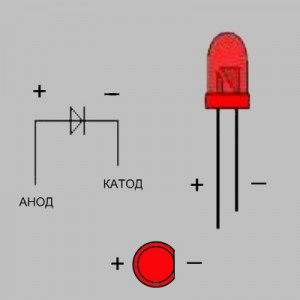Probably everyone, even novice radio amateurs (not even radio amateurs but just inquisitive people) knows what a LED is. LEDs are firmly embedded in everyday life, and each of us is constantly confronted with LEDs in everyday life. The article is of a general, informative character and is just useful for beginners or ordinary radio amateurs.
LED general information:
LED (figure 1) — its main property is the ability to emit light in different ranges depending on the type of LED and the material from which it is made. An LED also has an electron-hole junction (like any other semiconductor diode) and when current flows through it in the forward direction, the LED emits optical radiation in a narrow range of the spectrum.

Typically, an ordinary LED has two pins Figure #2 — a cathode and an anode.

As a rule, the plus side of the LED is initially longer than the minus side — it is convenient when mounting — so it is easier to immediately understand where the pin is. Also, the edge of the circumference of the glass part of the LED corresponding to the minus can be cut off (figure 2).
There are many varieties of LEDs: high-brightness LEDs, multicolor LEDs, LED matrices, LED strips, LED lamps, etc. Thus, you just need to adequately select the required type of LED, and boldly start assembling your idea, and the modern LED base will help you to fulfill any idea.

